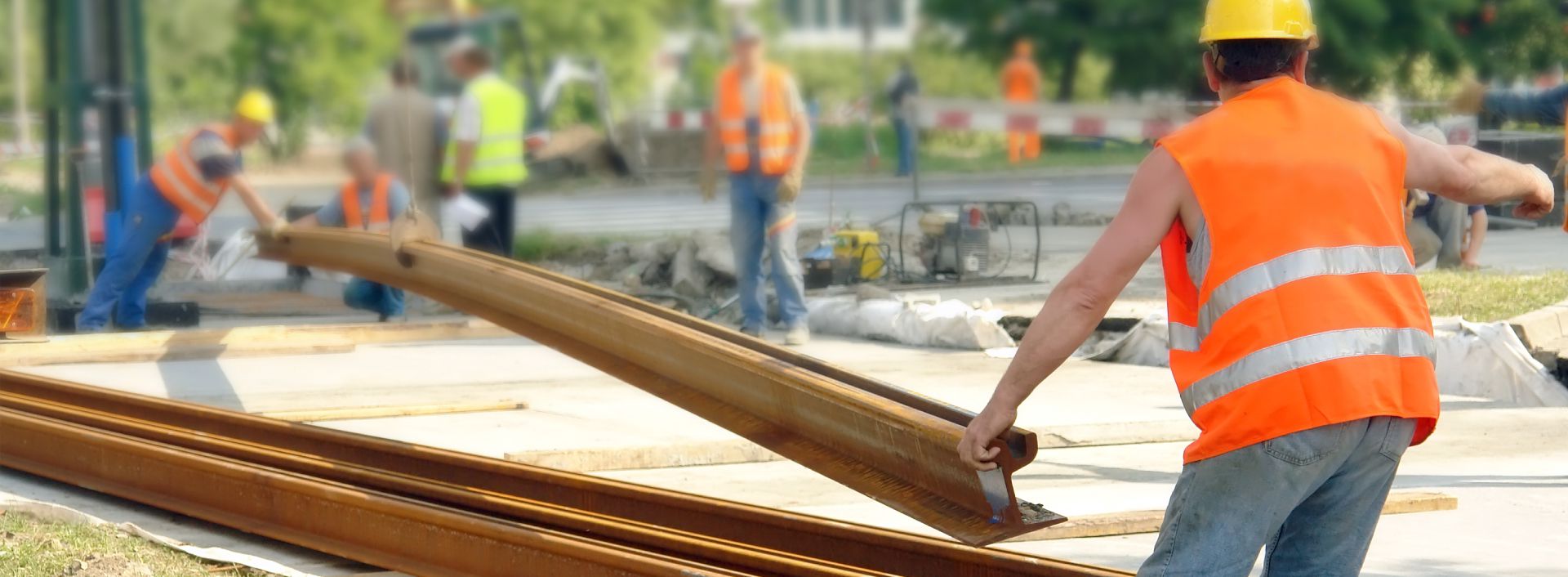Construction Accidents
According to the Bureau of Labor Statistics, approximately 150,000 workers are injured on construction sites each year. The Occupational Safety and Health Administration (OSHA) has found four leading causes of worker deaths in the construction industry. OSHA estimates that eliminating these “Fatal Four” would save over 600 lives in the United States every year.
Most Common Causes of Construction Fatalities
- Falls: Construction workers are at risk of falling from slip and falls, ladders, buildings and scaffolds. Falls are a significant threat, accounting for over 35 percent of construction worker deaths per year.
- Struck by Object: Construction workers can be struck by many objects, including motor vehicles, machinery, falling bricks or tools.
- Electrocutions: Electricians as well as other workers in the construction industry may suffer electrocution, electric shocks, burns or falls caused by electricity. Overhead power lines are also dangerous for workers who erect cranes or metal ladders nearby.
- Caught in or Between: This is the least common type of construction accident, but it still accounts for over seven percent of construction worker deaths. Construction workers may become caught in or between equipment with unguarded or rotating parts. Other common causes of this type of accident include collapsing structures, equipment or materials.
Common Construction Site Injuries
Construction site injuries may develop over time or occur as a result of an accident. Some common construction injuries include:
- Broken bones
- Heat-related injuries
- Loss of limbs/amputation
- Overexertion injuries
- Paralysis
- Repetitive motion injuries
- Traumatic brain injuries (TBI)
Workers’ Compensation Claims
All states offer some form of Workers’ Compensation, which allows injured workers to collect compensation for their injuries regardless of who was at fault. Workers’ Compensation rules generally only apply to an injured worker and his or her employer, and compensation is limited. However, if a third party is responsible for the worker’s injury, the victim may file a claim for third-party negligence. Filing a third-party liability claim is advantageous to injured construction workers because they may be able to recover substantially higher awards than by filing a Workers’ Compensation claim alone.
Third-Party Liability Claims
Subcontractors, vendors, property owners, architects, engineers and suppliers are all third parties that may cause or contribute to construction workers’ injuries. Injured construction workers may file a third-party liability claim against any of these parties and the companies they work for.
Injured construction workers must generally prove that the defendant had a duty to act in a safe and reasonable manner towards them; that the defendant failed to act in such a manner; and that they were injured as a result of the defendant’s negligence.
Successful third-party liability claims may entitle injured construction workers to compensation for past and future medical bills, lost wages, pain and suffering, and loss of consortium, among other damages. Due to the often-complicated nature of this type of claim, it is advisable to seek counsel from an experienced construction accident lawyer who is knowledgeable about federal and state construction law as well as OSHA regulations.
Delaware County Construction Accident Lawyers at Eckell Sparks Seek Compensation for Victims of Construction Accidents
If you or your loved one was injured in a construction accident, contact an experienced Delaware County construction accident lawyer at Eckell, Sparks, Levy, Auerbach, Monte, Sloane, Matthews & Auslander, P.C. Our knowledgeable construction accident lawyers are dedicated to providing comprehensive and aggressive representation to construction accident victims and their families. From our Media and West Chester offices, we represent clients throughout Delaware County and Chester County. Contact us online or call us at 610-565-3701 to schedule your no-cost consultation.
